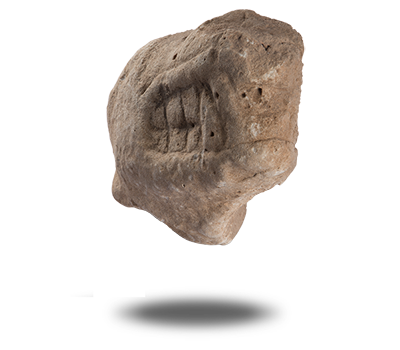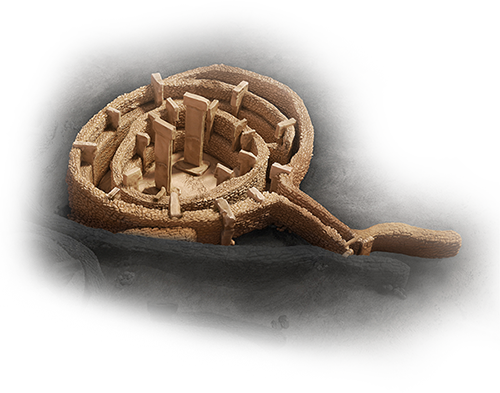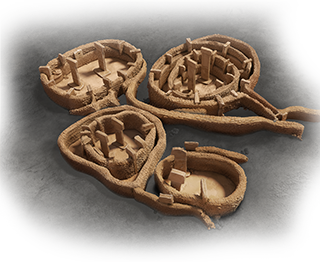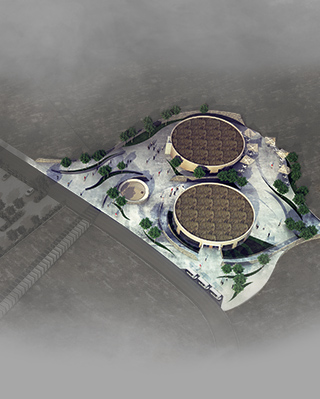GÖBEKLİTEPE
While Göbeklitepe sheds light on many of the mysteries of the history of civilization, it also introduces more enigmas that need attention. The excavations at Göbeklitepe have unearthed a mystery that will revolutionize all existing knowledge about humankind’s transition to permanent settlements.
About 11.600 years ago, one of the most compelling structures in the history of humanity was built between the Tigris and Euphrates rivers: Göbeklitepe...
With a of history 5.000 years older than the first cities of Mesopotamia - predating the famous Stonehenge in England (visited by millions of tourists) by by 6.600 years, 7.100 years senior to the Pyramids of Egypt, and 6.100 years ahead of the temples on Malta Island - the excavations at Göbeklitepe have unearthed a mystery that will revolutionize all existing knowledge on humankind’s transition to permanent settlements.
The findings point to the fact that people who lived in the area went to Göbeklitepe for worship. Its structures were not constructed for residential purposes. Göbeklitepe is a religious center from the Neolithic Age, dated to 9.600 BC; in other words, from around 11.600 years ago.
While Göbeklitepe sheds light on many of the mysteries of the history of civilization, it also introduces more enigmas that need attention. Archeological research has shown that the Göbeklitepe Neolithic Temple area was a space where people congregated periodically for worship. Some of the T-shaped monumental obelisks have been shaped to resemble humans; embossing arms, hands and clothing onto the stone. While not certain, it is assumed that the temple was buried by the same people who made use of it.
Göbeklitepe refutes the thesis that agriculture triggered people to establish settlements and progress in art and religion. The excavations point to the most radical changes in human history that began in the Near East. This shift suggests the fact that, beyond everything else that is known about history, there were humans who went from being hunter-gatherers, to becoming a society of settlers who domesticated animals, (perhaps for reasons other than what was assumed until now.)
HISTORY
ŞANLIURFA
One of the oldest human settlements along the Silk Road in Southeastern Turkey, Şanlıurfa was home to many independent states and chiefdoms throughout history. Hence becoming a cradle to many civilizations.
Şanlıurfa is an ancient city that witnessed many turning points in history. Agriculture and the first university were introduced here. Three monotheistic religions flourished in this city, and it was here that “fire did not burn Abraham.” Many multicultural elements coexist in Şanlıurfa, with its hospitable population. Throughout history, many prophets passed through, thus earning the nickname “The Prophets’ City.” However, the alluring story of Şanlıurfa’s experience with faith began long before monotheistic religions came along.
The history of Şanlıurfa goes back 18.000 years, as ascertained through excavation findings from Balıklıgöl, Nevali Çori, Göbeklitepe and across the city at large.
Having cradled many civilizations throughout its history, this city has been a meeting point of tolerance for religions, languages and cultures. Just like in its past, Şanlıurfa still carries these fundamental values to share with humanity.
EXHIBITION
The embossed figures of wild animals and plants located on the steles of Göbeklitepe
('T '- shaped obelisks) are regarded as the first examples of sculpture and plastic arts in the world. In other words, the images at Göbeklitepe are the oldest known
pictorial art carved into stone.
CULTURE AND
HERITAGE
The history of civilization is being rewritten in Göbeklitepe…
Findings that will overturn existing knowledge about the shift to permanent settlements have been uncovered in the Göbeklitepe excavations. The globally accepted archeological viewpoint states that the biggest factors
that led humans to shift from a hunter-gatherer lifestyle to settling, were the fear of hunger and the instinct for protection. However, Göbeklitepe challenges this approach. Taking into consideration the time period it
was built in, Göbeklitepe presents proof that religious beliefs might have played a role in shifting to permanent settlements.
Among the unanswered questions are how Göbeklitepe survived to our day so well preserved, and why, a thousand years after it was built, it was completely buried under tons of soil and flint stone.
The T-shaped stones in the temples, styled to resemble human beings, weigh from 10 to 15 tons each. Archeologists have yet to discover how the columns were transported and erected at a time when only simple hand tools
existed.
Another question that needs an answer is how these structures were designed approximately 11.600 years ago, during a period when humans were still hunter-gatherers, far from being settled or having begun any form of agriculture.
Perhaps when all these questions find answers, the history of our planet will be rewritten.
It is still unknown who designed or constructed the temples in Göbeklitepe.
According to astrophysicist/archaeoastronomer Giulio Magli of the Polytechnic University of Milan, Göbeklitepe was constructed to follow the movement of celestial bodies and to worship them, just like the Stonehenge in
England. German Archeological Institute member Jens Notroffe says “it is still debatable whether the monuments of Göbeklitepe had roofs. If there was a roof at the time, this would have made viewing stars a challenge.”
It would not be out of place to assume that Şanlıurfa, home to many Neolithic settlements, will be host to many discoveries that will shed light to some of the unsolved mysteries of our history, with Göbeklitepe foremost.
This fact alone underscores the significance of archeological research to be made in Şanlıurfa, with its rich historical infrastructure.
With a complete view over Harran Plain, Göbeklitepe is a prehistoric settlement like no other. Even with as little of it having been excavated so far, it gives us priceless clues to comprehend the processes of shifting
from hunting-gathering to agriculture, the domestication of animals, shaping of sacred spaces, and the birth of temple architecture and art. The physical area including Turkey has played a significant role in all phases
of the history of civilization, with countless cultures settling here and leaving imprints throughout different eras of history. Especially through research done in recent years, it has been shown that Anatolia has an unprecedented
place in world history. While foundations of modern civilization were laid during the Neolithic period, the astounding results of recent excavations show that the contribution of various Anatolian civilizations to this
formation have been far more than previously assumed.
EXCAVATION AREA
Geomagnetic and georadar surveillance done on Göbeklitepe traced 23 circular areas used for worship, with circumferences from 20 to 30 meters, only 6 layers of which have been unearthed until now.
The archeological excavations of the extraordinary findings at Göbeklitepe point to the impression that it was a religious/sacred center for meetings. A common thread can be observed in the methodology of the temples’
construction. Surrounded by T-shaped columns with 1.4 meters thickness, and a maximum height of 6 meters, the temples have two T-shaped columns at their center, placed side by side.
Archeologists concur that these columns measuring 3 to 6 meters represent stylized humans, based on the illustrations of arms and hands seen on the T-shaped columns.
PRESS
CONTACT FORM
STRUCTURE D
STRUCTURE B
STRUCTURE C
STRUCTURE A

VISITOR
CENTER
The oldest temple known to mankind, Göbeklitepe dates back 11.600 years. The historic site transformed our understanding of how human society first developed after its relatively recent discovery. This unexplored archaeological treasure from the dawn of humanity will be presenting you a miraculous experience with its renewed face soon.






































































